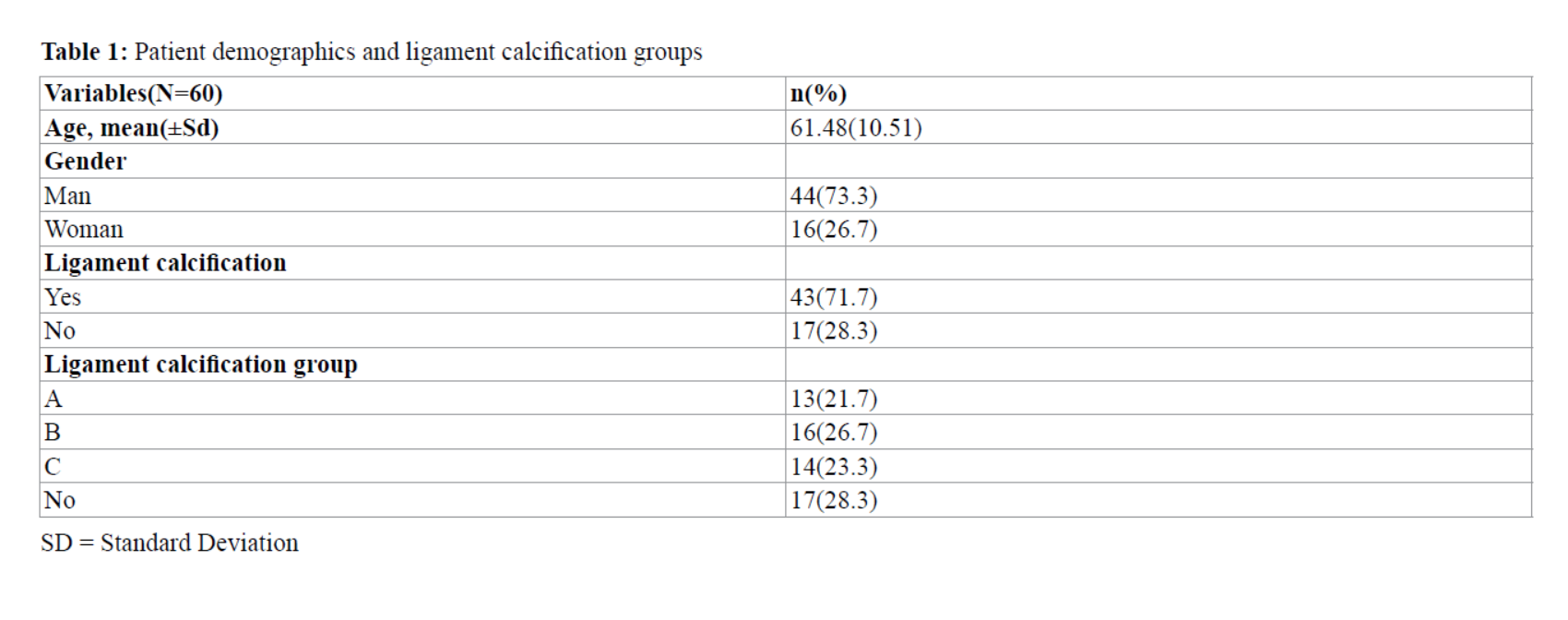Capped Dens Sign in Cervical Spondylotic Myelopathy
DOI:
https://doi.org/10.3941/jrcr.5442Abstract
Background: The calcification of the inter-atlanto-occipital ligament is called capped dens sign. This study aimed to investigate the prevalence of capped dens sign in patients with cervical spondylotic myelopathy (CSM) and to explore the potential association between these two conditions. Methods: A retrospective review was conducted of 60 patients who underwent surgery for CSM between 2019 and 2023. 44 of 60 of patients were male and 16 were female with 61.4 average of age. The patients were examined for inter-atlanto-occipital ligament calcification based on available radiographic data. Results: Our findings revealed a high incidence of capped dens sign among patients diagnosed with CSM, with calcification of the inter-atlanto-occipital ligament observed in 43 of the 60 patients (71.7%). The remaining 17 patients (28.3%) showed no evidence of such calcification Conclusion: The study reveals a noteworthy association between capped dens sign and CSM, suggesting that the calcification of the inter-atlanto-occipital ligament may play a significant role in the pathophysiology of CSM. Further studies are needed to confirm these findings and to delve deeper into the potential clinical implications of inter-atlanto-occipital ligament calcification in the management and prognosis of patients with CSM

Downloads
Published
Issue
Section
License
Copyright (c) 2024 Journal of Radiology Case Reports

This work is licensed under a Creative Commons Attribution-NonCommercial-NoDerivatives 4.0 International License.
The publisher holds the copyright to the published articles and contents. However, the articles in this journal are open-access articles distributed under the terms of the Creative Commons Attribution-NonCommercial-NoDerivs 4.0 License, which permits reproduction and distribution, provided the original work is properly cited. The publisher and author have the right to use the text, images and other multimedia contents from the submitted work for further usage in affiliated programs. Commercial use and derivative works are not permitted, unless explicitly allowed by the publisher.





